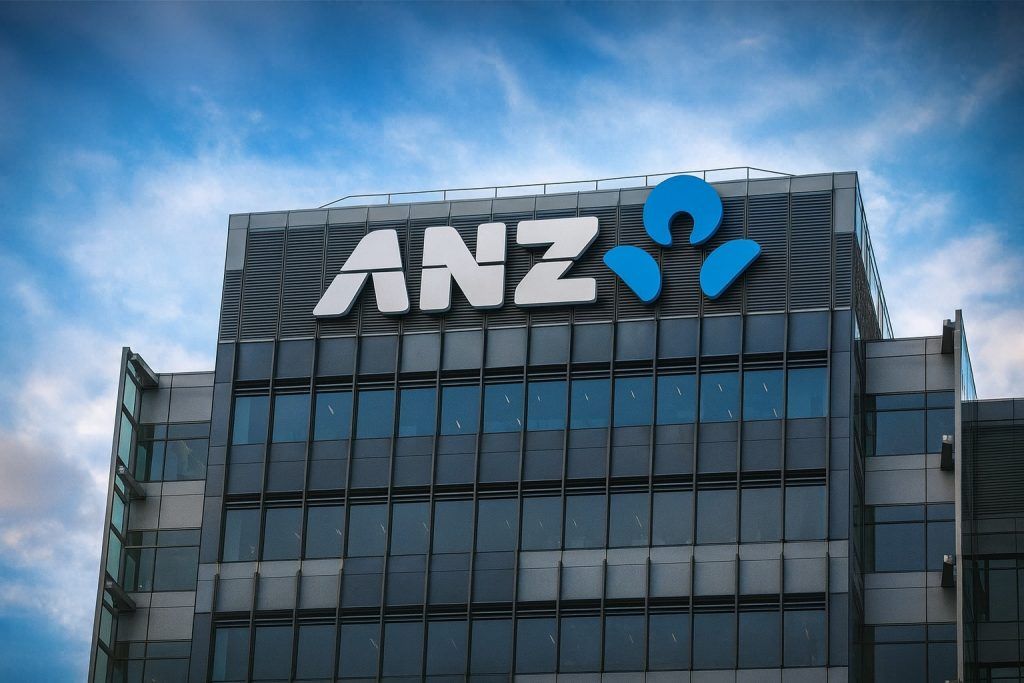Published: November 22, 2025 — covering market action from November 16–21, 2025
Technology stocks just wrapped one of their wildest weeks of 2025. What began as a cautious sell‑off ahead of Nvidia’s earnings and delayed U.S. jobs data morphed into a dramatic “up‑then‑down” spike around the chipmaker’s blockbuster results — and finally a relief rally on Friday that still wasn’t enough to pull tech out of the red for the week. [1]
Nvidia once again sat at the center of the storm. The world’s most valuable company delivered another blowout quarter and bullish guidance powered by “off the charts” demand for AI chips, yet its stock fell for the week as investors questioned whether the AI trade has simply run too hot. [2]
At the index level, the tech‑heavy Nasdaq ended the week down about 2.7%, its third consecutive weekly loss and now roughly 7% off its late‑October high. [3]
Key takeaways for tech investors (week of Nov. 16–21, 2025)
- Nvidia smashed expectations again. Q3 revenue hit about $57 billion vs. ~$55 billion expected, with data‑center sales around $51 billion and guidance for $65 billion next quarter. [4]
- But AI bubble fears intensified. Despite the earnings beat, Nvidia finished the week down nearly 6%, and Thursday’s post‑earnings session saw the Nasdaq tumble 2.2% and the S&P 500’s tech sector drop roughly 3%. [5]
- Volatility spiked. Multiple sessions saw intraday swings of more than 1,000 Dow points; Thursday alone erased an early Nvidia‑led rally and shaved more than $2.7 trillion off U.S. equity market value, by some estimates. [6]
- The week still ended lower for tech. On Friday, the Dow rose 1.1%, the S&P 500 1%, and the Nasdaq 0.9% — but all three finished the week down 1.9–2.7%, with tech the clear laggard. [7]
- Money is still flowing into tech. Bank of America’s latest “flow show” says tech funds remain on track for a record ~$75 billion of inflows in 2025, including about $4.4 billion just last week, even as valuations are questioned. [8]
- AI winners are highly concentrated. A recent Nasdaq/Motley Fool rundown highlighted that almost all of the world’s $1 trillion‑plus companies — Nvidia, Apple, Microsoft, Alphabet, Amazon, Broadcom, Meta, TSMC, Tesla and others — are deeply tied to AI spending. [9]
1. Setting the stage: stretched tech valuations and AI hype
Going into the week of November 16–21, big‑cap tech and AI leaders were already priced for perfection. Nvidia, Apple, Microsoft, Alphabet, Amazon, Broadcom, Meta Platforms, Taiwan Semiconductor Manufacturing (TSMC), and Tesla now dominate the global $1 trillion‑club — with most of that value explicitly tied to the artificial intelligence build‑out. [10]
At the same time, macro data and the Federal Reserve loomed large. The longest U.S. government shutdown in modern history delayed the September jobs report, which finally arrived this week and would help determine whether the Fed cuts rates again in December — a key driver for growth and tech valuations. [11]
That combination — sky‑high AI valuations + policy uncertainty — primed the market for outsized moves around Nvidia’s earnings release on Wednesday night.
2. Monday–Tuesday: Pre‑Nvidia jitters spark a tech sell‑off
Monday, Nov. 17
Wall Street began the week on the back foot. All three major U.S. indices fell around 1%, with the Dow down 1.2%, the S&P 500 off 0.9% and the Nasdaq slipping 0.8%. [12]
Importantly for tech bulls, both the S&P 500 and the Nasdaq closed below their 50‑day moving averages for the first time in months — a sign that the relentless uptrend in growth stocks could be breaking. Nvidia, the bellwether of the AI trade, dropped about 1.9% and was the single biggest drag on the S&P 500 and Nasdaq. [13]
Investor focus was firmly on two catalysts later in the week:
- Nvidia’s Q3 results on Wednesday, which would test whether AI demand remains “off the charts” or is finally normalizing.
- The delayed U.S. jobs report on Thursday, which would shape expectations for a December Fed rate cut. [14]
Tuesday, Nov. 18
The selling accelerated. Reuters reported that the Dow fell about 1.1%, the S&P 500 roughly 0.8% and the Nasdaq 1.2%, extending a multi‑day slide. Over four sessions, the S&P 500 had dropped about 3.4% as risk appetite soured. [15]
The story in tech was clear:
- Investors were de‑risking ahead of Nvidia’s print, worried that any hint of slowing AI demand or weaker guidance could puncture the AI trade.
- Concerns were mounting that AI exuberance had pushed valuations to expensive levels, especially for chipmakers and cloud infrastructure names. [16]
By Tuesday’s close, the market had set up a classic binary moment: either Nvidia would justify the hype and revive tech, or it would reinforce fears of an AI bubble and deepen the sell‑off.
3. Wednesday night: Nvidia blows past expectations and ignites a global tech rally
Nvidia didn’t disappoint on the numbers. After the U.S. close on Wednesday, Nov. 19, the company reported:
- Revenue: about $57 billion vs. ~$55 billion expected
- Data‑center revenue: ~$51 billion vs. ~$49.3 billion expected
- EPS: around $1.30 vs. expectations near $1.26
- Q4 revenue guidance: roughly $65 billion vs. Street forecasts around $62 billion
On the earnings call, CEO Jensen Huang directly addressed the “AI bubble” debate, arguing that Nvidia sees a durable infrastructure build‑out rather than a speculative mania. The company and its CFO highlighted an order book on track for about $500 billion in AI chip sales over 2025–26, and described demand for Blackwell‑class GPUs and next‑gen Vera Rubin chips as effectively sold out. [18]
Wall Street reacted instantly:
- Nvidia’s stock jumped 3–5% in after‑hours trading.
- Other AI chip names — Broadcom, TSMC, AMD and Oracle — climbed in sympathy, with some rallying more than 5–7% in extended trading. [19]
The optimism spilled overseas. In Asia’s Thursday session:
- AI‑linked chip suppliers like SK Hynix and Japan’s semiconductor names rallied, helping Tokyo’s Nikkei briefly reclaim the 50,000 level.
- European tech stocks opened higher before fading later in the day. [20]
For a moment, it looked like Nvidia had “saved” the AI trade.
4. Thursday: AI bubble fears slam the Nasdaq
That optimism didn’t last.
On Thursday, Nov. 20, U.S. markets opened sharply higher as traders cheered Nvidia’s results and a stronger‑than‑expected jobs report. But by the end of the day, the session had turned into one of the ugliest for tech this year.
According to Nasdaq/Zacks and Reuters:
- The Nasdaq fell about 2.2%, its lowest close since September 11.
- The S&P 500 dropped 1.6% and the Dow slid 0.8%, erasing an early 700‑point Dow gain.
- The Technology Select Sector SPDR (XLK) sank roughly 3.2%, and the PHLX Semiconductor Index fell nearly 5%. [21]
Nvidia itself staged a stunning reversal — up around 5% intraday before closing down about 3.2%. Other high‑beta AI names were hit even harder: AMD, Micron, Broadcom, Oracle, Palantir and various crypto‑adjacent tech plays all sold off. [22]
Several themes drove the sudden collapse:
- AI bubble anxiety returned with a vengeance.
- The Guardian and FT both highlighted how Nvidia’s strong results couldn’t overcome mounting worries that corporate AI capex has run ahead of visible returns. [23]
- Volatility gauges jumped, and commentators pointed to the parallel with earlier AI “air pockets” after the launch of Chinese chatbot DeepSeek and previous bouts of over‑investment panic. [24]
- Macro data muddied the Fed outlook.
- The delayed September jobs report showed stronger‑than‑expected payroll gains and a higher unemployment rate, giving both hawks and doves talking points and leaving markets unsure whether a December rate cut was really on the table. [25]
- Highly levered AI “infrastructure plays” came under the microscope.
- Oracle, which has raised tens of billions in new debt to fund AI data centers, has now dropped more than 40% from its all‑time high and was flagged by several analysts as a poster child for AI‑related excess. [26]
By some estimates, the single‑day sell‑off erased more than $2.7 trillion in U.S. equity market value, with the Nasdaq bearing the brunt. [27]
5. Friday: Rate‑cut hopes spark a relief rally, but tech ends the week lower
After Thursday’s rout, Friday’s session (Nov. 21) offered some much‑needed relief — but not a full reversal.
Dovish comments from New York Fed President John Williams, who said another rate cut “in the near term” could be appropriate, pushed the market’s implied odds of a December cut from about 39% to over 70%. [28]
That was enough to spark a broad rally:
- The Dow rose about 1.1% (≈493 points).
- The S&P 500 gained roughly 1%.
- The Nasdaq ended up about 0.9%. [29]
Big Tech participated:
- Alphabet climbed about 3.5%.
- Apple added around 2%.
- Meta Platforms gained close to 1%. [30]
Nvidia, however, couldn’t fully shake the week’s funk, closing down about 1% Friday and roughly 5.9% lower for the week, even after its blockbuster report. [31]
On a weekly basis, the damage was clear:
- Dow: about –1.9%
- S&P 500: around –2.0%
- Nasdaq: roughly –2.7%, its third straight weekly decline and longest losing streak since March, now about 7% below its October peak. [32]
Tech was at the center of that underperformance, with AI‑heavy names bearing the brunt.
6. Flows and fundamentals: Is the AI trade actually in trouble?
Despite the painful drawdown, several data points suggest investors haven’t abandoned tech — or AI — just yet.
Record inflows continue
Bank of America’s weekly flow report estimated: [33]
- Tech funds are still on track for a record ~$75 billion in inflows for 2025.
- Roughly $4.4 billion flowed into the sector in the week to Wednesday, even as prices slid.
That kind of buying suggests many institutions view the sell‑off as a valuation reset rather than the end of the AI story.
Trillion‑dollar AI club is still growing
A Nasdaq/Motley Fool analysis pointed out that there are now 11 public companies worth at least $1 trillion, and with the exception of Saudi Aramco and Berkshire Hathaway, all are heavily tied to AI — including Nvidia, Apple, Microsoft, Alphabet, Amazon, Broadcom, Meta, TSMC and Tesla. [34]
TSMC, in particular, is being framed as an “unsung hero” of the AI boom: as the dominant foundry manufacturing chips for Nvidia, AMD, Apple and others, it’s seen by some analysts as a potential candidate to join Nvidia and Apple in the $3 trillion‑plus club over the next few years if AI infrastructure spending continues. [35]
Bubble or early innings?
The week also crystalized the narrative tug‑of‑war around AI:
- A Reuters special report, “Bubble Trouble: AI rally shows cracks as investors question risks,” noted that AI‑linked stocks have experienced their biggest bout of volatility in months and that valuation metrics like the Buffett Indicator now sit above dot‑com‑era peaks — classic bubble warning signs. [36]
- At the same time, Nvidia’s latest quarter showed massive real revenues and profits, not just story‑stock hype, and Wall Street bulls argue we’re still in the “early innings” of a multi‑year investment cycle. [37]
In other words: fundamentals and flows still support the AI theme, but sentiment has become far more fragile.
7. What this week means for tech investors
From a big‑picture perspective, the week of November 16–21, 2025, looks less like the end of the AI boom and more like a stress test of how much volatility investors are willing to stomach.
Three practical implications
- Earnings matter again, even for AI darlings.
Nvidia delivered another statistically stunning quarter — and its stock still fell for the week. The message: beating expectations isn’t enough when valuations already assume perfection, especially if macro data and Fed policy are uncertain. [38] - AI “infrastructure” and debt‑heavy plays are under scrutiny.
Companies funding huge data‑center build‑outs with aggressive borrowing — Oracle is the standout example — are now being reassessed as investors weigh long‑term returns against rising leverage and higher real yields. [39] - Concentration risk is real.
With so much of the market’s value and index performance tied up in a handful of AI‑linked giants, volatility in just a few names (Nvidia, Microsoft, Apple, Alphabet, Meta, Tesla, TSMC, Broadcom) now translates directly into violent swings in the Nasdaq and S&P 500. [40]
Looking ahead to next week
Heading into the shortened U.S. Thanksgiving week:
- Markets will be watching for follow‑through in rate‑cut expectations after John Williams’ comments and other Fed speeches. [41]
- AI‑linked names will likely stay in the spotlight as investors parse where earnings‑backed growth ends and speculation begins.
- Fund‑flow data will help show whether this week’s tech weakness triggers redeeming or dip‑buying in AI and semiconductor ETFs. [42]
Final word
For now, the verdict on “AI bubble vs. AI super‑cycle” remains unresolved. Nvidia’s numbers continue to validate huge demand, but this week proved that even the strongest fundamentals can’t fully insulate tech stocks from valuation gravity and macro shocks.
Investors — professional and retail alike — will likely need to get comfortable with bigger, faster swings in tech as the market digests both extraordinary growth and extraordinary expectations.
This article is for informational and news purposes only and does not constitute financial advice, investment recommendation, or an offer to buy or sell any security. Always do your own research or consult a licensed financial adviser before making investment decisions.
References
1. www.reuters.com, 2. www.businessinsider.com, 3. www.reuters.com, 4. www.businessinsider.com, 5. www.investopedia.com, 6. www.reuters.com, 7. www.reuters.com, 8. www.reuters.com, 9. www.nasdaq.com, 10. www.nasdaq.com, 11. www.reuters.com, 12. www.reuters.com, 13. www.reuters.com, 14. www.reuters.com, 15. www.reuters.com, 16. www.reuters.com, 17. www.businessinsider.com, 18. www.businessinsider.com, 19. www.businessinsider.com, 20. www.reuters.com, 21. www.nasdaq.com, 22. www.nasdaq.com, 23. www.ft.com, 24. en.wikipedia.org, 25. www.nasdaq.com, 26. www.investopedia.com, 27. m.economictimes.com, 28. www.investopedia.com, 29. www.reuters.com, 30. www.reuters.com, 31. www.reuters.com, 32. www.reuters.com, 33. www.reuters.com, 34. www.nasdaq.com, 35. www.nasdaq.com, 36. www.reuters.com, 37. www.businessinsider.com, 38. www.businessinsider.com, 39. www.investopedia.com, 40. www.nasdaq.com, 41. www.reuters.com, 42. www.reuters.com








